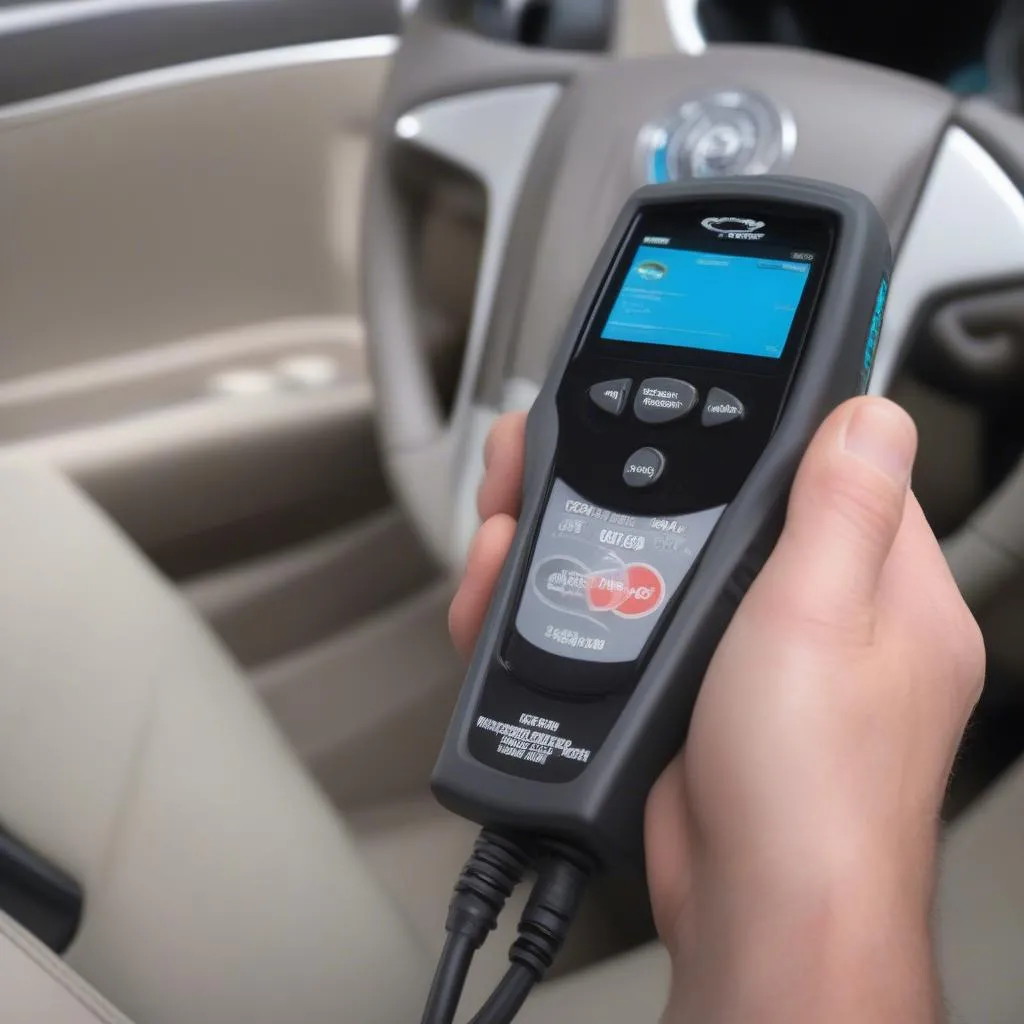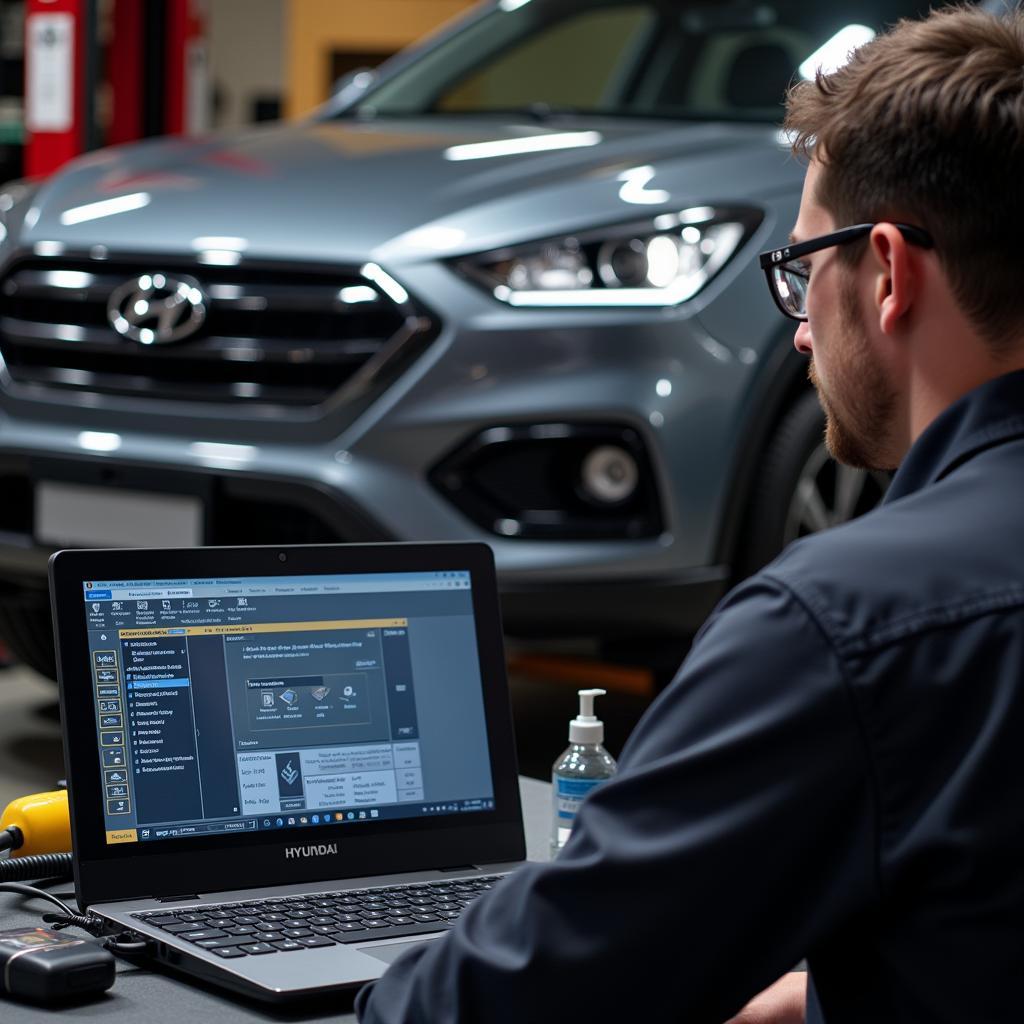The “Discovery Sport brake pads worn” warning light is a common issue that many drivers encounter. When you see this warning, it means that your brake pads are nearing the end of their lifespan and need to be replaced. This is a crucial safety measure that should not be ignored.
Understanding the Discovery Sport Brake Pads Worn Warning
Your Discovery Sport’s brake system relies heavily on brake pads, which create friction to slow down and stop the vehicle. Over time, these pads wear down due to constant use. The warning light alerts you when the brake pads reach a specific level of wear, usually around 3-5mm remaining.
Why Is My Discovery Sport Showing a Brake Pads Worn Warning?
The warning light is triggered by a sensor built into your brake pad assembly. This sensor sends a signal to the car’s computer, which then activates the warning light on your dashboard. Here are some common reasons why you might see the warning:
- Normal wear and tear: This is the most common reason for brake pads wearing down. As you drive, the pads rub against the brake rotors, gradually eroding their material.
- Aggressive driving: Frequent hard braking and excessive speed can accelerate wear on your brake pads.
- Poor driving conditions: Driving in dusty, sandy, or wet environments can lead to faster brake pad wear.
- Defective brake pads: In rare cases, defective brake pads might wear down faster than expected.
What to Do When You See the “Brake Pads Worn” Warning
It’s important to take immediate action when you see the warning light. Here’s what you should do:
- Don’t panic: While the warning light is a serious indicator, it doesn’t mean your brakes are completely out.
- Schedule a service: Contact a reputable mechanic or your local Land Rover dealership for a brake inspection.
- Drive carefully: Avoid hard braking and driving at high speeds.
- Get your brake pads replaced: The mechanic will inspect your brake pads and recommend replacement if necessary.
Can I Keep Driving With the “Brake Pads Worn” Warning?
It’s not advisable to continue driving with the warning light illuminated. Although you might still have some braking power, driving with worn pads increases the risk of:
- Reduced braking effectiveness: Worn brake pads will take longer to stop your vehicle.
- Damage to the brake rotors: Worn brake pads can damage your rotors, leading to costly repairs.
- Increased stopping distance: This can put you and other road users at risk.
Can I Replace the Brake Pads Myself?
While replacing brake pads is a relatively simple task, it’s generally recommended to have it done by a qualified mechanic. Brake systems are vital for your safety, and incorrect installation can lead to serious consequences.
How Much Does It Cost to Replace Brake Pads?
The cost of replacing brake pads varies depending on the make and model of your vehicle, the type of brake pads used, and the labor costs in your area. Expect to pay between $100 and $300 per axle.
How Long Do Brake Pads Last?
The lifespan of brake pads depends on various factors, such as driving habits, driving conditions, and the quality of the pads. Typically, brake pads last between 25,000 and 60,000 miles.
How to Extend the Life of Your Brake Pads
Here are a few tips to help extend the life of your Discovery Sport’s brake pads:
- Drive smoothly: Avoid hard braking and sudden acceleration.
- Maintain a safe distance: This gives you more time to react and brake gently.
- Use cruise control on highways: This helps maintain a consistent speed and reduces brake usage.
- Get regular brake inspections: Have your brake pads inspected by a professional every 12 months or 12,000 miles.
What Happens If I Ignore the Warning?
Ignoring the “brake pads worn” warning light can lead to serious consequences, such as:
- Brake failure: Worn brake pads can eventually wear down completely, leading to a complete loss of braking power.
- Damage to the brake rotors: Worn brake pads can damage the rotors, resulting in a grinding sound and increased stopping distances.
- Increased stopping distance: This can lead to accidents, especially in emergencies.
How Can I Tell If My Brake Pads Are Worn?
If you’re not sure if your brake pads need replacement, you can check them yourself. Here’s how:
- Look for visible wear: Use a flashlight to look at the brake pads through the wheel spokes. If you see metal or very little brake pad material left, it’s time for replacement.
- Listen for noises: A squeaking or grinding sound when braking is a clear sign that your brake pads are worn.
- Feel for vibration: If you feel a vibration in your brake pedal when braking, it could indicate that your brake pads are worn or your rotors are damaged.
What Should I Do After Replacing My Brake Pads?
Once you have new brake pads installed, it’s essential to:
- Bed in the brakes: This involves gently braking over a short distance to allow the new pads to bed in properly.
- Check for leaks: Ensure there are no leaks in the brake lines or calipers.
- Test the brakes: Take your car for a test drive to ensure the brakes are functioning correctly.
Expert Opinion
[Expert Name], a certified mechanic with over 15 years of experience: “Ignoring the brake pad warning light can be dangerous. It’s crucial to address the issue promptly to ensure your safety and prevent costly repairs.”
[Expert Name], a Land Rover specialist: “Driving with worn brake pads can increase stopping distance, which can be a significant safety hazard. It’s best to have your brake pads replaced as soon as you see the warning light.”
FAQ
Q: How often should I get my brake pads inspected?
A: It’s recommended to get your brake pads inspected every 12 months or 12,000 miles.
Q: What is the difference between brake pads and brake shoes?
A: Brake pads are typically used in disc brakes, while brake shoes are used in drum brakes.
Q: Can I use different types of brake pads on my Discovery Sport?
A: Yes, there are different types of brake pads available, including ceramic, semi-metallic, and organic pads. It’s essential to choose the right type of brake pads for your driving style and needs.
Q: What should I look for when choosing new brake pads?
A: Consider factors such as:
- Performance: Ceramic pads offer high performance and low noise, but they can be more expensive.
- Noise: Semi-metallic pads offer good performance but can be noisy.
- Durability: Organic pads are less durable but are quieter and cheaper than other options.
Q: Should I replace both front and rear brake pads at the same time?
A: While it’s not always necessary, it’s a good idea to replace both front and rear brake pads at the same time if they are wearing down at a similar rate. This ensures even braking performance and prevents potential issues in the future.
Remember, your brake pads are critical to your safety and the safety of others on the road. Don’t ignore the “brake pads worn” warning light. If you see it, schedule an inspection or replacement as soon as possible.


